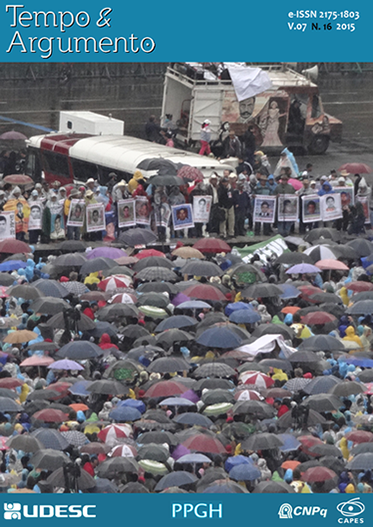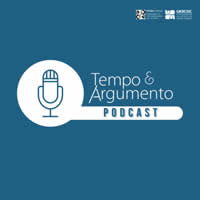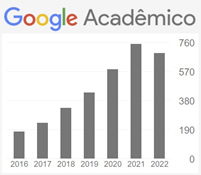Artifacts and Artifices among Memory and History
DOI:
https://doi.org/10.5965/2175180307162015353Resumo
This paper intends to discuss ideas, actions, and experiences of people who self-identify as “left-wing” and are also considered by their opponents as the “new left wing”, as proposed by a number of scholars to distinguish them from communist groups of traditional formation (Stalinists, Trotskists, etc.). Having been already in operation since the 1950 decade or earlier, with highlights as resistance to the civil-military dictatorship that ruled Brazil between 1964 and 1985, they particularly support the struggle for better conditions of life and work, as well as freedoms in general. Documents produced by these people and found in both public and private spheres have been used to observe this phenomenon. There is particular focus on the joint participation of the left wing movements in trade unions and social movements, as well as in civil society organizations and even institutionally, in frequent clashes with the liberal and populist opposition. The objective is to understand the relevance (or not) of their participation and the possible influences that they may have exerted in the contemporary path that Brazil has taken. Since many of its members were in tune with criticism of the lacking independence of subaltern class mobilizations and organizations, as well as with the importance of fighting for the rights of women and social minorities, they may have given rather unique characteristics to the redemocratization process in the country (1985-1989).Downloads
Não há dados estatísticos.
Downloads
Publicado
2016-03-29
Como Citar
FALCÃO, Luiz Felipe. Artifacts and Artifices among Memory and History. Revista Tempo e Argumento, Florianópolis, v. 7, n. 16, p. 353–375, 2016. DOI: 10.5965/2175180307162015353. Disponível em: https://revistas.udesc.br/index.php/tempo/article/view/2175180307162015353. Acesso em: 7 jan. 2025.
Edição
Seção
Traduções





